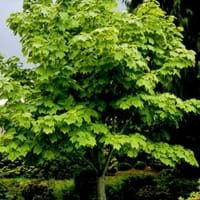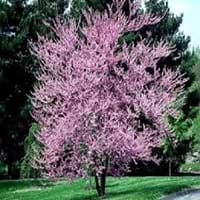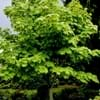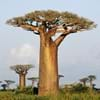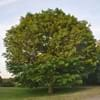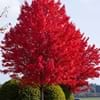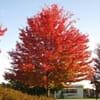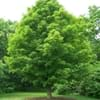What is
Life Span
Perennial
Perennial
Type
Tree
Tree
Origin
Northeastern United States, Mid-Atlantic United States, Southeastern United States, Canada
Northeastern United States, Mid-Atlantic United States, Southeastern United States, North-Central United States, Central United States, South-Central United States, Canada
Types
Not Available
Not Available
Habitat
moist forests, Slopes
Alpine Meadows, shaded woods
USDA Hardiness Zone
3-7
4-9
AHS Heat Zone
7-1
9-5
Sunset Zone
Not Available
1a, 1b, 2a, 2b, 3a, 3b, 7, 8, 9, 10, 11, 12, 13, 14, 15, 16, 17, 18, 19, 20
Habit
Upright/Erect
Oval or Rounded
Information
Plant Size
Minimum Height
610.00 cm
99+
760.00 cm
99+
Minimum Width
460.00 cm
99+
760.00 cm
29
Plant Color
Flower Color
Yellow, Yellow green
Red, Purple, Violet
Flower Color Modifier
Bicolor
Bicolor
Fruit Color
Green, Brown
Brown, Chocolate
Leaf Color in Spring
Light Green
Purple, Plum
Leaf Color in Summer
Green
Green, Dark Green
Leaf Color in Fall
Yellow
Yellow, Yellow green
Leaf Color in Winter
Not Available
Not Available
Shape
Leaf Shape
Maple shaped
Heart-shaped
Thorns
No
No
Season
Plant Season
Not Available
Spring, Summer, Fall
Growing Conditions
Sunlight
Partial Sun, Partial shade
Full Sun, Partial Sun
Growth Rate
Fast
Medium
Type of Soil
Loam
Clay, Loam, Sand
The pH of Soil
Acidic, Neutral
Acidic, Neutral, Alkaline
Soil Drainage
Well drained
Well drained
Bloom Time
Early Spring, Spring
Early Spring, Spring, Late Spring
Repeat Bloomer
No
No
Tolerances
Not Available
Drought
Care
Where to Plant?
Ground
Ground
How to Plant?
Layering, Seedlings, Stem Cutting
Cuttings
Plant Maintenance
Medium
Medium
Watering Plants
Watering Requirements
Requires regular watering
Keep the ground moist but not water-logged
In Summer
Lots of watering
Lots of watering
In Spring
Moderate
Moderate
In Winter
Average Water
Average Water
Soil
Soil pH
Acidic, Neutral
Acidic, Neutral, Alkaline
Soil Type
Loam
Clay, Loam, Sand
Soil Drainage Capacity
Well drained
Well drained
Sun Exposure
Partial Sun, Partial shade
Full Sun, Partial Sun
Pruning
Prune if you want to improve plant shape
Prune to stimulate growth, Remove damaged leaves, Remove dead branches, Remove dead leaves
Fertilizers
All-Purpose Liquid Fertilizer
All-Purpose Liquid Fertilizer
Pests and Diseases
Anthracnose, Bacterial leaf scorch, Bleeding canker, Decline, Fomes root rot, Ganoderma root rot, Laetiporus root rot, Leaf spot, Powdery mildew, Red blotch, Tar spot, Verticillium Wilt
Bacterial Canker, Verticillium Wilt
Plant Tolerance
Drought
Drought
Facts
Flowers
Insignificant
Showy
Flower Petal Number
Single
Single
Fruits
Showy Fruit
No
No
Edible Fruit
No
No
Fragrance
Fragrant Flower
No
Yes
Fragrant Fruit
No
No
Fragrant Leaf
No
No
Fragrant Bark/Stem
No
No
Showy Foliage
No
Yes
Showy Bark
Yes
No
Foliage Texture
Coarse
Medium
Foliage Sheen
Matte
Glossy
Evergreen
No
No
Invasive
No
No
Self-Sowing
Yes
Yes
Attracts
Not Available
Birds
Allergy
Asthma, Runny nose, Skin irritation
Unknown
Benefits
Uses
Aesthetic Uses
Showy Purposes
Beautification, Formal Garden, Ground Cover, Showy Purposes
Beauty Benefits
Not Available
Not Available
Edible Uses
Yes
Yes
Environmental Uses
Air purification
Air purification, Food for animals, Food for birds, Nesting sites for birds
Plant Benefits
Medicinal Uses
Antirheumatic, Cold, Cough, Emetic, gonorrhoea, Kidney problems, Pectoral, Swelling, Vomiting
Unknown
Part of Plant Used
Leaves, Sap
Not Applicable
Other Uses
Used as Ornamental plant, Used as preservative
Beneficial species for attracting pollinators, Used as Ornamental plant
Used As Indoor Plant
No
No
Used As Outdoor Plant
Yes
Yes
Garden Design
Feature Plant
Feature Plant, Foundation, Mixed Border, Shade Trees
Scientific Name
Botanical Name
ACER pensylvanicum
CERCIS canadensis 'Forest Pansy'
Common Name
Moosewood, striped maple, moose maple
Eastern Redbud, Forest Pansy Redbud
In Hindi
धारीदार मेपल
Forest Pansy Redbud
In German
gestreifte Ahorn
Forest Pansy Redbud
In French
érable rayé
gainier du Canada
In Spanish
arce rayado
Cercis canadensis
In Greek
ριγέ σφενδάμου
Forest Pansy Redbud
In Portuguese
plátano listrada
Forest Pansy Redbud
In Polish
paski klonu
Judaszowiec kanadyjski
In Latin
alba acernis
Forest Pansy Redbud
Classification
Kingdom
Plantae
Plantae
Phylum
Magnoliophyta
Spermatophyta
Class
Magnoliopsida
Magnoliopsida
Order
Sapindales
Fabales
Family
Aceraceae
Fabaceae
Genus
Acer
Cercis
Clade
Angiosperms, Eudicots, Rosids
Angiosperms, Eudicots, Rosids
Tribe
Not Available
Not Available
Subfamily
Not Available
Not Available
Number of Species
Not Available
Not Available
|
||
|
||
|
